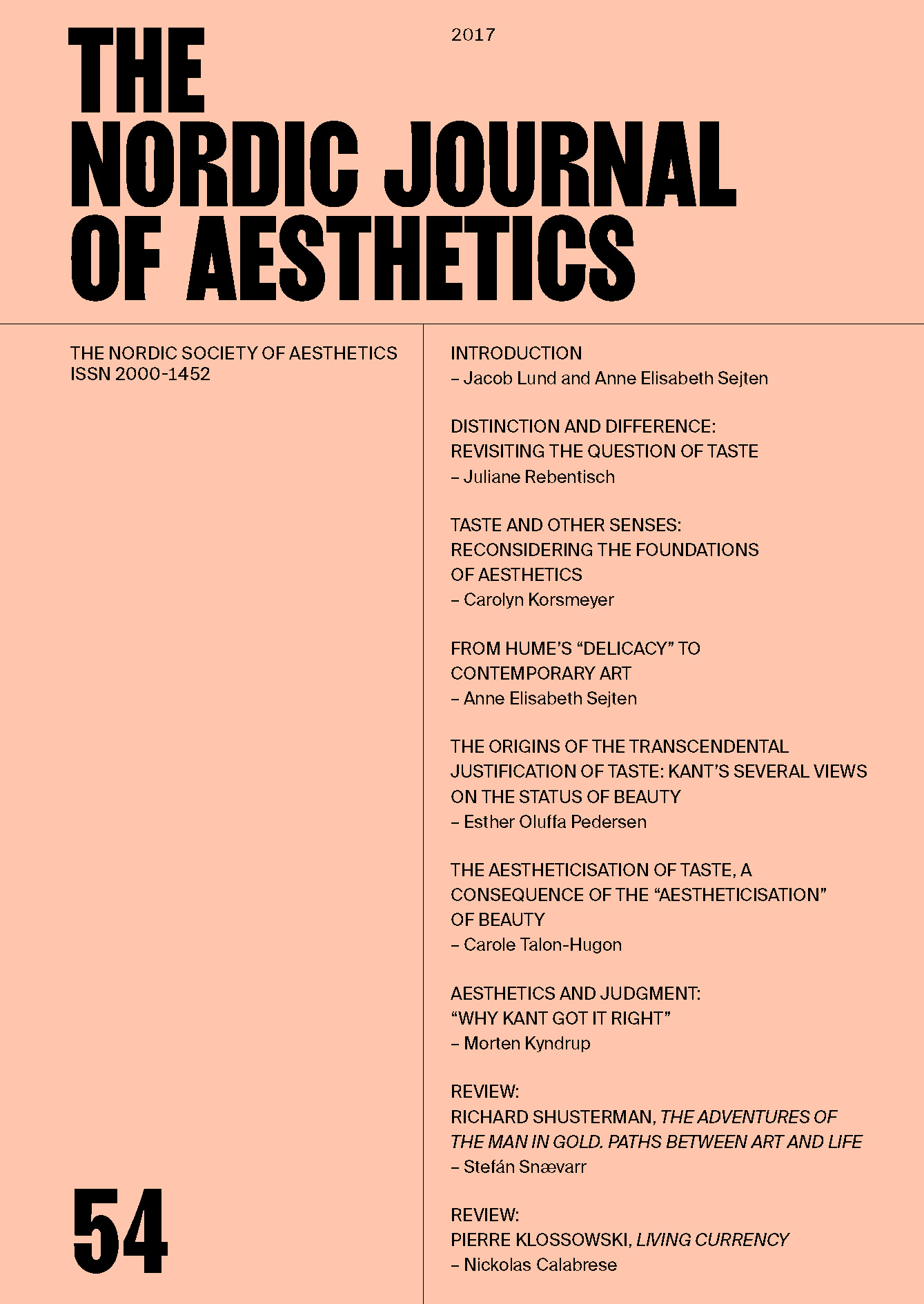THE ORIGINS OF THE TRANSCENDENTAL JUSTIFICATION OF TASTE: KANT’S SEVERAL VIEWS ON THE STATUS OF BEAUTY
DOI:
https://doi.org/10.7146/nja.v26i54.103081Keywords:
Kant, Aesthetics, Art, Culture Critique, Zammito, Freethinking.Abstract
The article follows Kant’s different views on aesthetics ranging from the pre-critical period to the Critique of the Power of Judgement. It argues that John Zammito’s psychological explanation of why Kant in the third Critique developed an argument for the transcendental justification of judgements of taste is unconvincing. As an alternative, the article shows how Kant in his published pre-critical discussions of aesthetics was relying upon empiricist sources while he in private comments turned to consider the culture critique of Rousseau. Kant’s preoccupation with questions of culture critique, it is argued, was an important reason to enlarge the doctrines of transcendental philosophy with a third Critique containing a transcendental aesthetics of beauty. Additionally, it is pointed out an interesting similarity throughout the development of Kant’s philosophy. In 1765 and in the third Critique Kant was concerned to keep philosophy and judgements of taste apart from science
Downloads
Published
How to Cite
Issue
Section
License
Authors who publish with this journal agree to the following terms:
- Authors retain copyright and grant the journal right of first publication with the work simultaneously licensed under a Creative Commons Attribution License that allows others to share the work with an acknowledgement of the work's authorship and initial publication in this journal.
- Authors are able to enter into separate, additional contractual arrangements for the non-exclusive distribution of the journal's published version of the work (e.g., post it to an institutional repository or publish it in a book), with an acknowledgement of its initial publication in this journal.
- Authors are permitted and encouraged to post their work online (e.g., in institutional repositories or on their website) prior to and during the submission process, as it can lead to productive exchanges, as well as earlier and greater citation of published work (See The Effect of Open Access).




